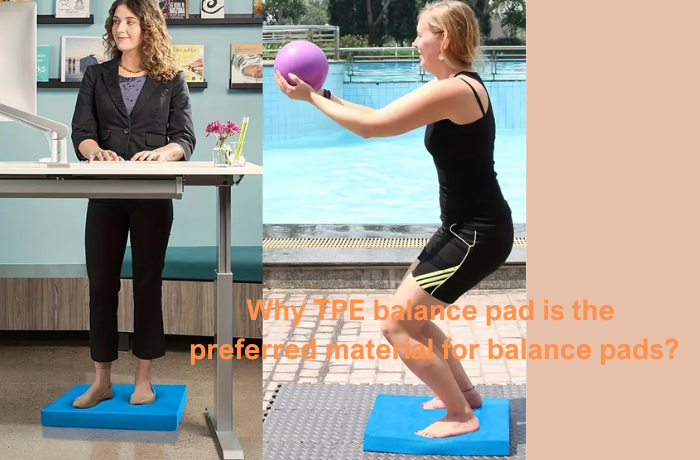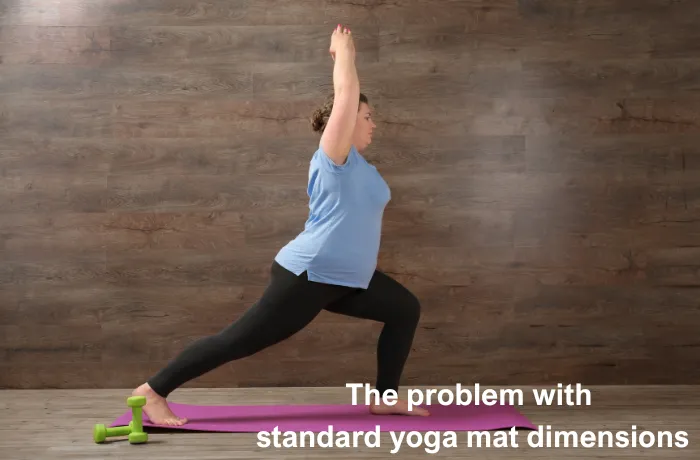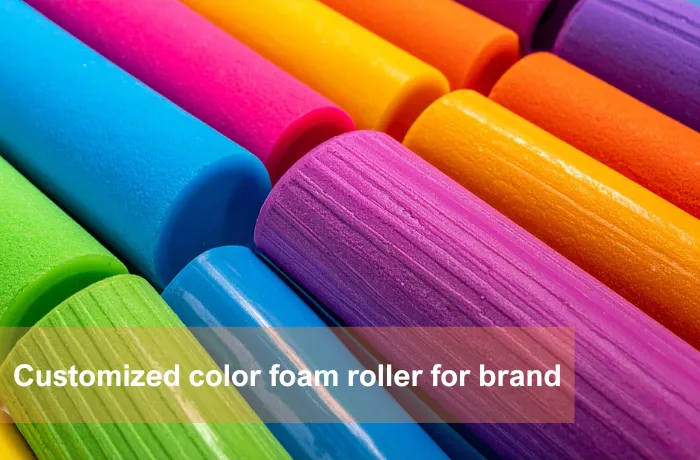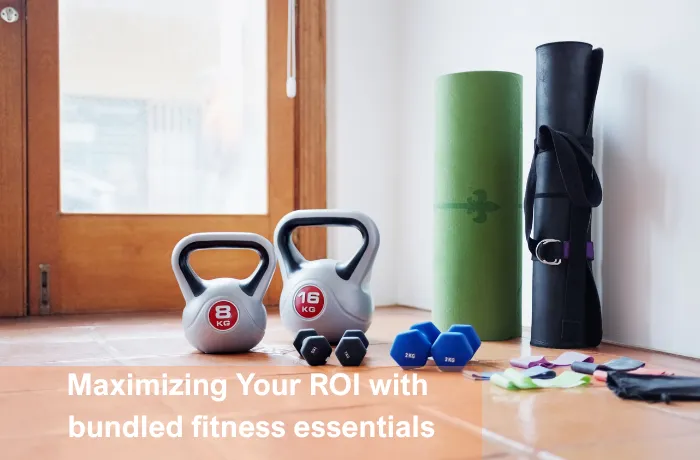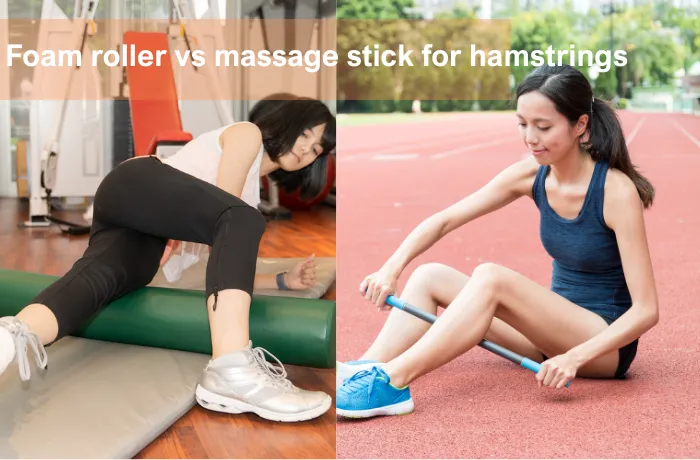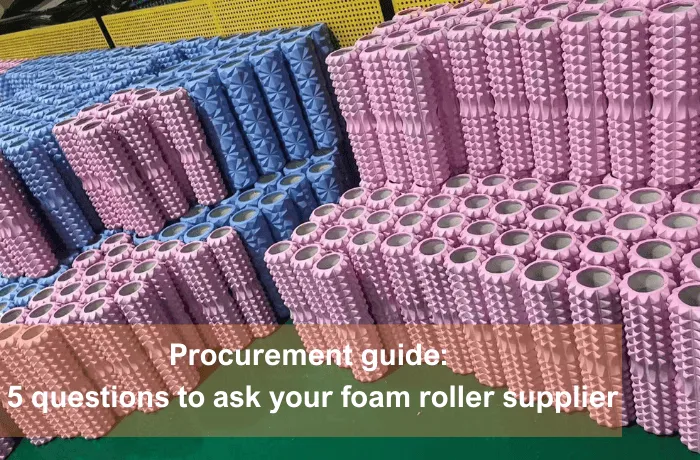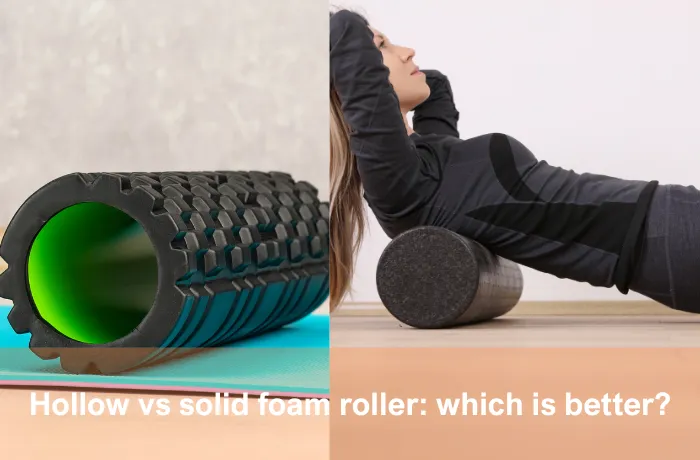TPE balance pad is the best material for balance and stability. People use it for exercise or when they need to recover. Many users and experts say it is very strong. It is also safe for the environment and not harmful to people. The table below shows why many people like TPE more than other materials:
| Feature Aspect | Description |
|---|---|
| Durability | TPE balance pads last a long time. |
| Eco-friendliness | Made from things that help the earth. |
| Safety (Non-toxicity) | Safe and not toxic for everyone. |
| Functional Benefits | Helps with balance and strong muscles. |
People like that the pad is soft and clean. It is also light, so you can take it anywhere. These things make TPE a good choice for people who care about health and doing well.
Key Takeaways
- TPE balance pads give soft padding and strong help. They protect your joints when you exercise or recover. The closed-cell design makes TPE pads last a long time. They do not tear easily and do not soak up sweat. This keeps them clean and strong. TPE pads have a bumpy, non-slip top. This helps your feet stay in place. It lowers the chance of slipping. These pads are good for the earth and are not toxic. They are safe for people and nature. TPE balance pads are light and easy to move. You can take them to the gym, home, or outside. They are good for fitness, healing, and daily use. They help you get better at balance, strength, and moving well. Pick the right thickness, density, and safety parts. This makes sure you feel good and safe when you use them. Clean them often and store them right. This keeps TPE pads fresh, keeps their shape, and helps them last longer.
TPE Balance Pad Benefits
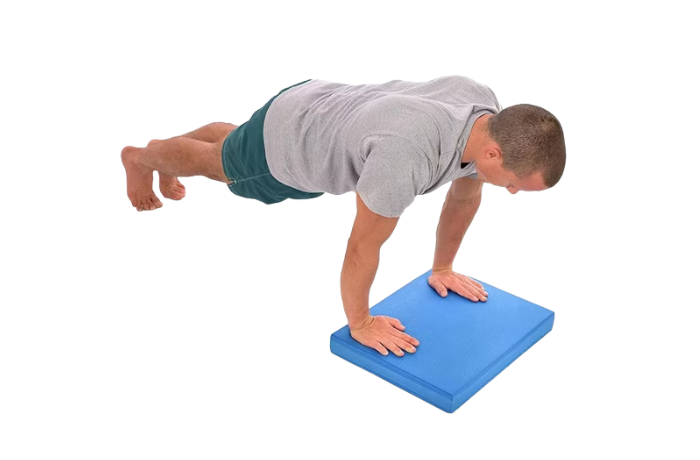
Comfort & Cushioning
Soft Support
A TPE balance pad gives both softness and support. Most pads are between 3mm and 5mm thick. This thickness makes a soft cushion under your feet. It helps protect your joints when you exercise or recover. The pad’s density is also important. Pads that are denser give more support and keep you steady. Even thin pads can be strong if they are dense. This mix of thickness and density keeps you comfy and in the right position.
- Most TPE balance pads have:
- 3mm to 5mm thickness for good cushioning
- Dense build for strong support
- Soft top that feels nice on your skin
Pressure Relief
Pressure relief matters if you use a balance pad for a long time. The TPE balance pad spreads your weight out evenly. This lowers stress on your ankles, knees, and hips. Athletes, older people, and those healing from injury all benefit. The pad’s cushion soaks up impact. This helps stop pain and tiredness during workouts or therapy.
Tip: Pick a pad with the right thickness and density. It can help you feel better and protect your joints.
Durability
Tear Resistance
TPE balance pads last longer than many others. The closed-cell design stops tears, even if you use it a lot. This design also keeps out water and bad smells. The pad keeps its shape and stays strong over time. You can use it every day and not worry about it breaking fast.
Long Service Life
A TPE balance pad lasts longer than most foam or rubber pads. The material does not change shape and bounces back after use. Thicker and denser pads wear out less, so they are good for gyms, clinics, or home. The pad stays comfy and supportive, even after months of use.
- Main durability features:
- Closed-cell design keeps out water
- High density helps the pad keep its shape
- Tear-resistant top for long use
Safety Features
Non-Slip Surface
Safety is very important for any balance pad. The TPE balance pad has a textured, non-slip top. It grips your feet and the floor well, even if wet or sweaty. This grip keeps you steady and helps stop slips. TPE pads grip better than EVA and are as good or better than NBR.
| Material | Non-slip Surface Effectiveness | Additional Notes |
|---|---|---|
| TPE | Textured top grips feet and floor, even when sweaty. Keeps you safe and steady during exercise. Bounces back well and keeps its shape. | High-density, closed-cell design keeps out water and smells. Non-toxic, tear-resistant, light, and grips better than EVA and as good or better than NBR. |
| EVA | Pretty good grip but not as good as rubber. Can be too hard for balance. | Harder and smooth but less steady for balance. Not as good at gripping as TPE. |
| NBR | Great grip and cushion. Good for joints and gentle yoga. Not as good for moves that need a firm floor. | Soft and comfy but does not bounce back as well. May get dents faster. Good grip but not as firm as TPE for balance. |
Stable Footing
Stable footing is key for balance and rehab. The TPE balance pad’s strong grip and shape help you stay steady. The pad stays flat, even when you move or shift your weight. This helps keep you safe, whether you are new or experienced.
Note: Many TPE balance pads meet safety rules like CE, REACH, SGS, and CA65. These show the pads are safe, non-toxic, and made with care.
Hygiene & Maintenance
Sweat-Proof
A TPE balance pad is great because it does not let sweat in. The closed-cell structure keeps water out of the pad. Sweat stays on top and does not go inside. This stops bad smells and germs from building up. Athletes and therapists like this because it keeps things clean. The pad stays dry, even when you work out hard. You do not have to worry about smells or stains.
- Closed-cell technology keeps sweat from getting inside.
- The pad does not smell bad, even after many uses.
- It lasts longer because it does not soak up water.
Tip: A sweat-proof pad helps stop skin problems and makes workouts nicer.
Easy Cleaning
Cleaning a TPE balance pad is very easy. The smooth top lets you wipe off dirt and sweat fast. You only need a damp cloth to clean it. Most pads just need a little soap and water. The pad dries fast, so you can use it again soon. This simple cleaning saves time and keeps your workout area healthy.
- Wipe the pad with a soft cloth after using it.
- Use gentle soap if you need to clean it more.
- Let the pad air-dry before you put it away.
A TPE balance pad is good for people who want things clean and easy. It is sweat-proof and simple to clean, so it works well at home, in gyms, or in clinics.
Eco-Friendly & Portable
Eco-Friendly Material
Sustainable Choice
TPE balance pads are better for the earth than many other materials. Factories make TPE with heat and chemicals, but it hurts the planet less than some other choices. TPE does not need extra stuff to make it stronger. This means there are fewer bad leftovers. TPE is still man-made and does not break down fast in trash dumps. But it does not let out dangerous things as it breaks down. This makes TPE safer for nature than NBR and EVA.
| Material | Environmental/Manufacturing Characteristics |
|---|---|
| TPE (Thermal Plastic Elastomer) | Not as bad as PVC but still made by people. Made with heat and chemicals. Makes pollution because it uses oil. No need for extra strong stuff. Breaks down slowly but does not make bad leftovers. |
| NBR (Nitrile Butadiene Rubber) | Made by people, not from nature. Needs bad chemicals like Butadiene. Making it is bad for the earth. Some places do not make it because it is unsafe. |
| EVA (Ethylene-Vinyl Acetate) | Made by people with chemicals and smells. No clear info on pollution. Light and keeps water out. Used in many mats but not much info on earth safety. |
Note: TPE is a good mix of working well and being better for the earth. It does not use the worst chemicals that other pads do.
Non-Toxic
TPE balance pads are safe for everyone to use. Brands like A2ZCare and CleanRun say their pads use only non-toxic TPE. These pads do not have bad chemicals. Kids, adults, and older people can use them safely. TPE keeps water out, so it does not smell bad. This helps the pad stay clean. Because TPE is non-toxic, you can use it without worrying about bad chemicals.
Portability
Lightweight
TPE balance pads are light and easy to move. Most pads weigh about 350 grams or 0.36 pounds. This makes them simple to pick up, even for kids or older people. Being light does not make the pad weak. You can carry it from place to place or take it outside with no trouble.
| Product Source | Weight | Material | Portability Impact |
|---|---|---|---|
| DHgate TPE Pad | 350 grams | TPE | Light and comfy, easy to take anywhere |
| Vive Oval Pad | 0.36 lbs | TPE foam | Light, so you can bring it to the gym |
| Vive Health Pad | 0.36 lbs | TPE foam | Light, so you can use it at home or the gym |
Easy to Carry
TPE balance pads are small and bendy, so they are easy to carry. Many people fold or roll them to fit in a bag. This makes it simple to use the pad at home, at the gym, or outside. Trainers, therapists, and athletes like bringing their own clean pad everywhere.
Tip: Pick a TPE balance pad if you travel, go to classes, or work out outside. Its light and easy-to-carry style works for any life.
TPE Balance Pad vs. Others
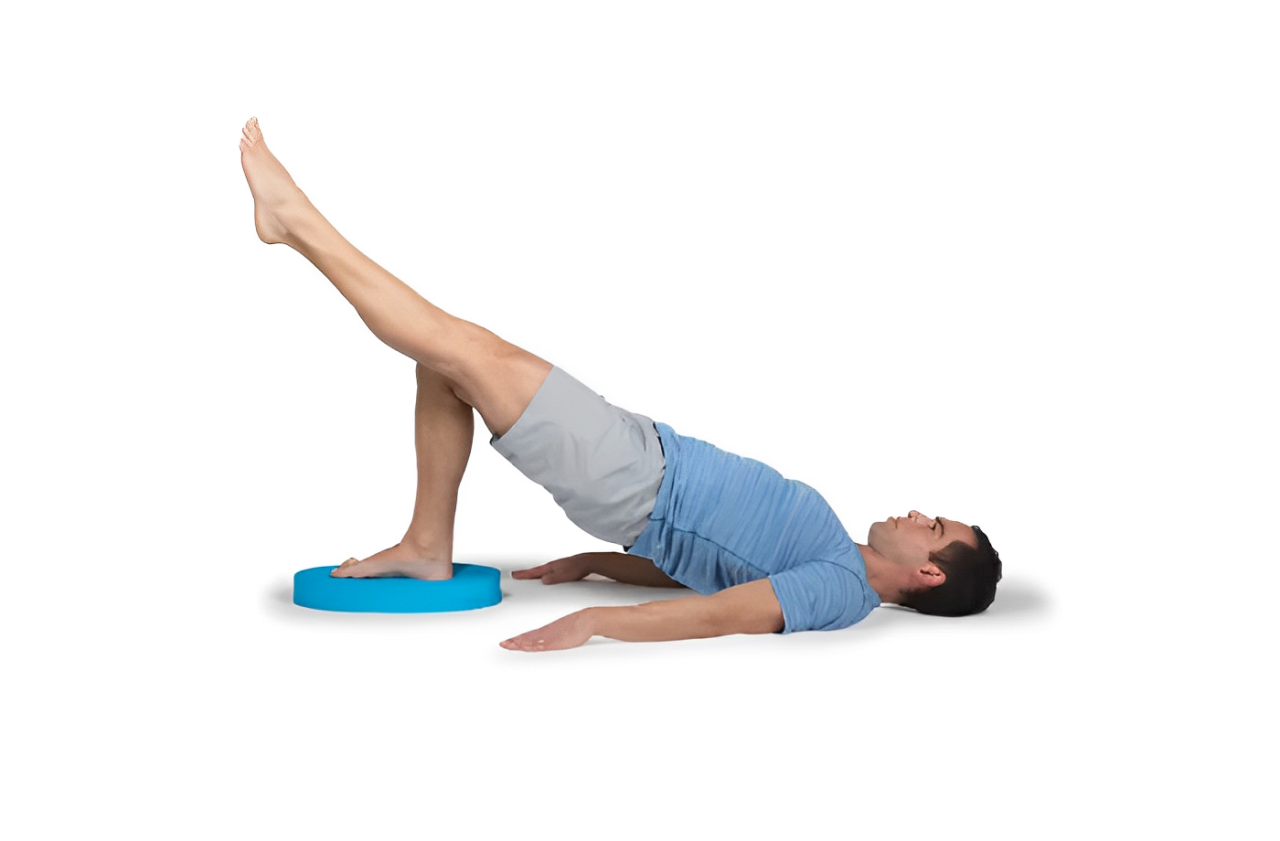
TPE vs. EVA
TPE and EVA balance pads are different in many ways. TPE mats feel softer and give better support. They help your joints and keep their shape longer. This is good for people who need more support during long workouts or therapy. TPE mats are comfy for joints and last longer than EVA mats. TPE mats do not lose their shape like EVA mats can. The non-slip top on TPE mats helps you stay steady. This is important for balance moves. EVA mats cost less and give basic comfort, but they are not as strong or grippy as TPE mats. TPE mats are great for beginners and people who need joint help. EVA mats work for lighter or easy activities because they are softer and less steady.
TPE balance pads are stronger and easier to care for. They do not wear out fast and keep their shape after many uses. Cleaning a TPE pad is easy. Just wipe it after each use. TPE pads do not soak up water, so they stay fresh. EVA pads need more cleaning and can lose their shape faster.
Note: TPE mats work for many exercises, but EVA mats are best for light use.
TPE vs. NBR
TPE and NBR balance pads both have good points. The table below shows how they are different:
| Feature/Aspect | TPE (Thermoplastic Elastomers) | NBR (Nitrile Butadiene Rubber) |
|---|---|---|
| Material Properties | Lightweight, flexible, waterproof, anti-microbial, recyclable, some biodegradability | Thicker, squishy, oil resistant, good heat resistance and elasticity |
| Advantages | Easy to clean, hygienic, good grip, more eco-friendly than PVC, portable | Extra cushioning, good for sensitive joints, affordable, durable, heat and oil resistant |
| Disadvantages | Shorter lifespan (1-3 years), may smell if not cleaned, synthetic manufacturing | Heavier, less eco-friendly, not recyclable |
| Usage Recommendations | Best for eco-conscious users, those who value hygiene and portability | Best for users needing extra cushioning and joint support |
| Maintenance | Needs regular cleaning to avoid odor | Easy to clean, durable |
Experts say TPE mats are good for many exercise types. They are light, easy to carry, and protect your joints. But they may not last as long as rubber mats. NBR mats give more cushion and last longer, so they are good for people with sore joints. But NBR mats are heavier and not as good for the earth.
TPE is better for the planet than NBR. It can be recycled and does not have bad chemicals. NBR is worse for the earth and cannot be recycled. People who care about the earth often pick TPE or natural rubber instead of NBR.
Tip: Pick a TPE balance pad for better cleanliness, easy carrying, and safety for the earth. Choose NBR if you want more cushion and a pad that lasts longer.
User Benefits
Fitness Use
A TPE balance pad works for many fitness activities. Trainers often suggest it to help with balance and strength. People use the pad for easy and hard exercises. The soft but steady pad makes your body work to stay still. This helps you build muscle and control. Here is a table with some common exercises you can do on a TPE balance pad:
| Exercise Type | Description | Targeted Muscle Groups and Benefits |
|---|---|---|
| Basic Balance Sequence | Stand on the pad and tilt forward, back, and side to side. This helps you get better at staying steady and moving well. | Glutes, quadriceps, hamstrings, calves, core muscles; helps with balance, coordination, and knowing where your body is. |
| Mini Squats | Do slow squats while balancing. Keep your feet wide apart. You can hold something steady if you want. | Glutes, quadriceps, hamstrings, calves, core muscles; makes your legs and balance stronger. |
| Plank | Hold a push-up pose with your hands on the pad. Keep your body straight. | Core, glutes, hips, legs, shoulders, back, arms; makes your core and body stronger. |
| Push-ups | Do push-ups with your hands on the pad. This makes it harder and helps you get stronger. | Chest, triceps, core muscles; builds upper body and core strength. |
| Glute Bridge | Lie on your back with your feet on the pad. Lift your hips up and keep your balance. | Glutes, hamstrings, core muscles; works the back of your body and core. |
These moves help you get better balance and stronger muscles. The pad’s design makes each workout a little harder, so you get more out of it.
Rehabilitation
Physical therapists pick TPE balance pads to help people heal. Studies show that using these pads helps with balance and movement, especially after knee injuries. This training helps people move better and lowers the chance of getting hurt again.
- Balance pads make your body work harder to stay steady.
- Therapists use them for ankle sprains, knee surgery, nerve problems, and to stop falls in older people.
- The pad helps with balance, core strength, and moving well, which are important for daily life.
- It gives a safe and gentle challenge, so beginners and older adults can use it.
- Therapists use the pad with other tools to help each person.
- The foam pad is just wobbly enough for standing and moving exercises.
Note: Many clinics use these pads to help people learn how to shift weight and stand on one leg again.
Everyday Use
A TPE balance pad is easy to use every day. People use it at home, work, or outside. The pad is light and easy to carry anywhere. Many people stand on the pad while brushing teeth or watching TV to get better balance without extra work. Office workers put the pad under their feet to feel less tired when standing for a long time. Older adults use it at home to practice balance and help stop falls.
- The soft pad feels nice on bare feet.
- It stays clean and dries fast, so it is good for busy people.
- Families play balance games on it, so kids stay active.
Tip: Using a balance pad every day helps you stand better, build muscle, and move safely at any age.
Choosing a TPE Balance Pad
Key Features
When you pick a TPE balance pad, look at some important things. The thickness of the pad matters for comfort and support. Most pads are between 3 mm and 5 mm thick. Thicker pads feel softer and protect your joints more. Thinner pads bend easier and are simple to carry. The pad’s density is also important. A dense pad keeps its shape and helps you stay steady.
The top of the pad should have a texture. This helps your feet grip the pad and keeps you safe. A non-slip surface stops you from slipping, even if the pad is wet. This is very important for balance training or rehab. The pad should not let water or sweat inside. Closed-cell pads keep out sweat and are easy to clean.
A strong pad will last a long time, even if you use it a lot. Good TPE pads do not tear or lose their shape. Pads that are light are easy to move and store. Many people like pads that roll up or fold. Some pads come with straps or bags, which makes them easy to take anywhere.
Tip: Pick pads with safety marks like CE or SGS. These show the pad is safe and made well.
Buying Tips
Here are some easy tips for new buyers:
- Think about where you will use the pad—at home, at the gym, or when you travel.
- Pick a thickness that fits what you need. Most people like 3 mm to 5 mm.
- Make sure the pad with available bag or solid box for easy storage.
- Choose a pad with a non-slip top for safety.
- Get a pad with closed cells to keep sweat out.
- Check for safety marks to make sure the pad is good quality.
A TPE balance pad with the right features will help you feel safe, comfy, and make your workouts easier.
Care Tips
Cleaning
Proper cleaning keeps a TPE balance pad safe and long-lasting. Many users find that regular care prevents odor and material breakdown. TPE pads resist sweat and dirt, but routine cleaning remains essential for hygiene.
Here is a simple cleaning process:
- Mix water with a mild detergent. Use this solution to spot clean the pad.
- Wipe the surface gently with a soft cloth or sponge.
- Avoid soaking the pad in water. Excess moisture can distort the material and reduce its lifespan.
- Rinse the cloth and wipe away any soap residue.
- Air dry the pad in a shaded area. Keep it away from direct sunlight, which can cause fading and weaken the material.
- Wait until the pad is completely dry before storing. Moisture left on the pad can lead to mold or mildew.
Tip: Never use harsh chemicals or abrasive brushes. These can damage the TPE surface and reduce grip.
A clean pad not only looks better but also feels better during use. Many gyms and clinics recommend cleaning after each session, especially if multiple people use the same pad.
Storage
Storing a TPE balance pad correctly helps maintain its shape and performance. Poor storage can lead to warping, creases, or even material breakdown.
Follow these storage guidelines:
- Place the pad in a cool, dry area. Heat and humidity can weaken the foam and cause it to lose resilience.
- Keep the pad out of direct sunlight. UV rays can degrade the TPE and cause discoloration.
- Lay the pad flat or stand it upright. This prevents bending or warping over time.
- Do not stack heavy objects on top of the pad. Compression can leave permanent dents or reduce cushioning.
- Always ensure the pad is dry before storing. Trapped moisture can lead to mold growth and unpleasant odors.
- Use a mat bag or cover the pad with a clean towel. This protects it from dust and keeps it ready for use.
Note: Rolling the pad instead of folding helps avoid creases and maintains its original shape.
Proper storage extends the life of a TPE balance pad. Athletes, therapists, and home users all benefit from these simple habits. A well-cared-for pad delivers consistent support and safety for every session.
A TPE balance pad is a great pick for people who want comfort, strength, and safety. This material gives good support and is simple to clean. It also grips well, so you do not slip. Many people like that it is better for the earth and not heavy.
- You can use a TPE balance pad for exercise, therapy, or every day.
Picking this pad helps you do better and stay healthy.
FAQ
What makes TPE balance pads safer than other materials?
TPE balance pads have a surface that stops slipping. The closed-cell design keeps the pad steady when you use it. Many companies check their pads to make sure they are safe. They also make sure the pads do not have harmful stuff.
Can children and seniors use TPE balance pads?
Yes, kids and older people can use TPE balance pads. The pad is soft and helps you stand steady. Therapists often tell people of all ages to use these pads. They are good for balance and gentle workouts.
How often should users clean a TPE balance pad?
You should clean your pad after every use, especially if you share it. Wipe it with a wet cloth and some mild soap. Cleaning it fast stops bad smells and keeps it clean.
Do TPE balance pads lose shape over time?
TPE pads do not flatten or tear easily. The thick material goes back to normal after you use it. If you take care of it, the pad will keep its shape for a long time.
Are TPE balance pads eco-friendly?
TPE is better for the earth than many other fake materials. Factories can recycle TPE, and it does not let out bad chemicals. Many people pick TPE because it is kinder to the planet.
What exercises work best with a TPE balance pad?
You can do many moves on a TPE balance pad. Try balance drills, squats, planks, and rehab exercises. Trainers and therapists use these pads for both exercise and healing.
Can users take TPE balance pads outdoors?
Yes, you can use TPE balance pads outside. The pads are light and simple to carry. The closed-cell design keeps water out, so you can use it on many surfaces.
How should users store a TPE balance pad?
Keep the pad flat or roll it up in a cool, dry spot. Do not put it in the sun or under heavy things. Storing it right helps the pad last longer and stay ready to use.

